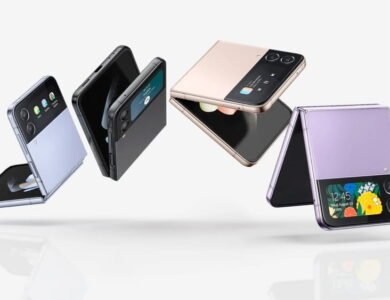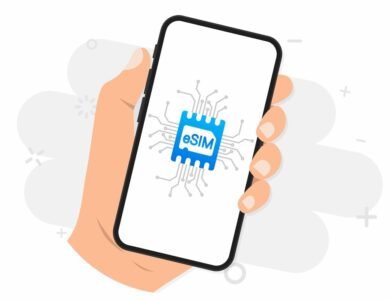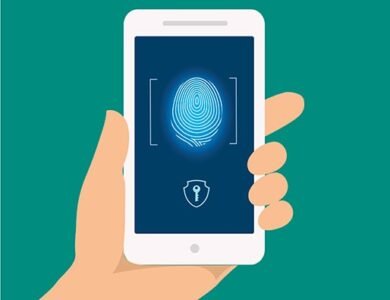How 5G Technology Is Revolutionizing Mobile Connectivity
Introduction to 5G Technology
The fifth generation of wireless communication systems, or 5G, is not just another “G” in the mobile technology alphabet. A major change is about to transform mobile connectivity totally. But let’s begin at the beginning rather than getting into the specifics.

The Emergence of 5G
The journey from 1G to the present 5G has been a fascinating one. Each preceding generation has aimed to correct the limitations of its predecessor, but 5G, it’s an entirely different ball game. It’s not just about making things faster or more efficient. It’s about enabling a network that’s capable of connecting virtually everyone and everything together including machines, objects, and devices.
5G vs 4G: What’s the Difference?
Comparing 5G to its predecessor, the 4G LTE, is like comparing a bullet train to a regular passenger train. The differences are vast and the improvements are significant. But it’s not only about speed. It’s also about capacity and latency.
The Power of 5G Technology
When we talk about the power of 5G technology, we’re referring to three crucial aspects: speed, capacity, and latency.

Speed and Capacity
5G technology promises to deliver speeds up to 100 times faster than 4G, with the potential peak data rates reaching up to 20 Gbps. Furthermore, 5G technology is designed to connect a massive number of devices, making it exponentially more scalable than 4G.
Latency
Latency, or the delay before a transfer of data begins following an instruction for its transfer, is drastically reduced in 5G. With potential latency of just a few milliseconds, 5G offers real-time interaction capabilities, which is crucial for various applications including autonomous vehicles and surgical robots.
The Impact of 5G on Mobile Connectivity
5G technology is expected to enhance three significant areas of mobile connectivity: Enhanced Mobile Broadband (eMBB), Ultra Reliable Low Latency Communications (URLLC), and Massive Machine Type Communications (MTC).
Enhanced Mobile Broadband (eMBB)
This application is all about speed and high data rates. It’s about enabling a consistently connected and high data rate experience across the entire coverage area.
Ultra-Reliable Low Latency Communications (URLLC)
URLLC is designed to support services that require ultra-reliability, availability, and low latency. Think of critical applications like remote surgeries or autonomous vehicles.
Massive Machine Type Communications (mMTC)
mMTC refers to the large-scale connection of devices that communicate small amounts of data, often without human interaction. This is key for IoT applications and could transform industries like agriculture, manufacturing, and logistics.
Real-World Applications of 5G
5G technology is not just about improving personal mobile internet connectivity. Its real-world applications extend to various aspects of everyday life and business.
In Everyday Life
From enhanced mobile experiences to smart homes, cities, and healthcare, 5G is set to make our daily lives more efficient and connected.
In Business and Industry
For businesses, the implications of 5G are vast. It will drive innovation, enable new business models, and disrupt industries. From manufacturing and logistics to healthcare and agriculture, no sector will remain untouched by the 5G revolution.
Future of 5G Technology
As we look towards the future, 5G promises exciting possibilities. However, it also presents significant challenges and concerns.
Challenges and Concerns
While 5G technology holds significant promise, it also faces notable challenges, including infrastructure requirements, security concerns, and health issues. Addressing these concerns will be crucial for the successful adoption of 5G.
Conclusion
Mobile communication will undergo a transformation thanks to 5G technology, which will also usher in a period of tremendous growth and innovation. The future’s obstacles are present, but the potential rewards surpass them by a wide margin. As time goes on, 5G will continue to change the way we interact, work, and live around the globe.
FAQs for How 5G Technology Is Revolutionizing Mobile Connectivity
When will 5G be available everywhere?
The rollout of 5G is a gradual process and will take several years to reach global coverage.
What can we expect from the future of 5G?
Future advancements in 5G technology will further increase speed, reduce latency, and enhance connectivity, impacting all sectors from healthcare to manufacturing.
Does 5G replace Wi-Fi?
No, 5G and Wi-Fi serve different purposes and will continue to coexist. 5G is ideal for outdoor and large-scale use, while Wi-Fi is more suited for indoor use.
What are the potential risks associated with 5G?
The main concerns surrounding 5G are related to infrastructure requirements, security concerns, and potential health risks.








